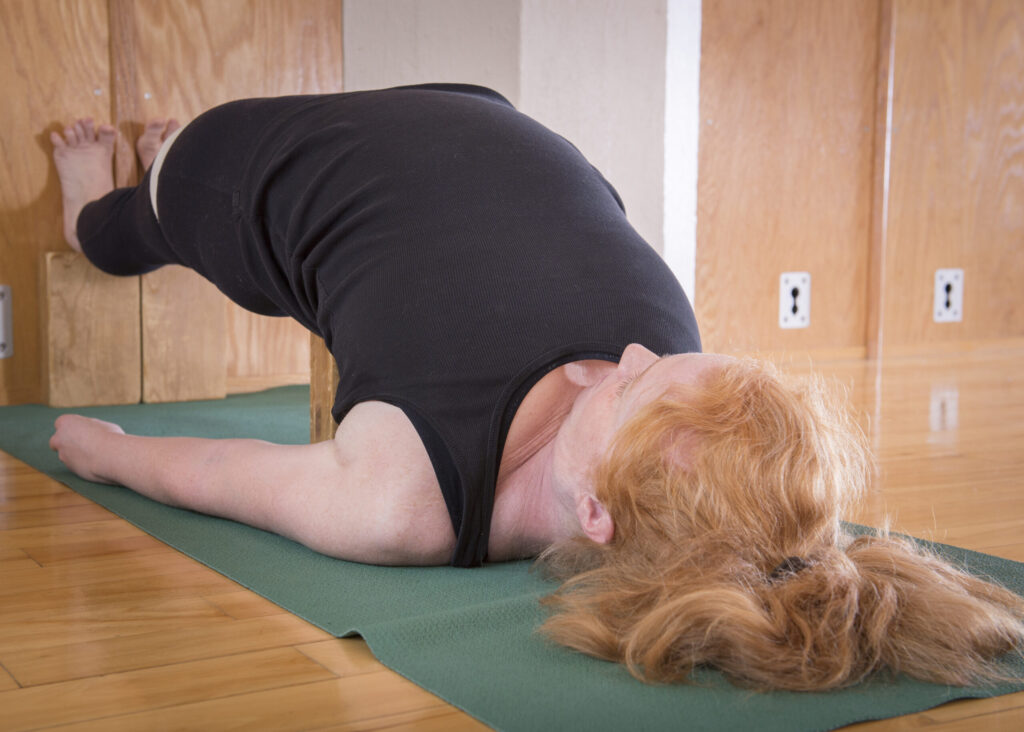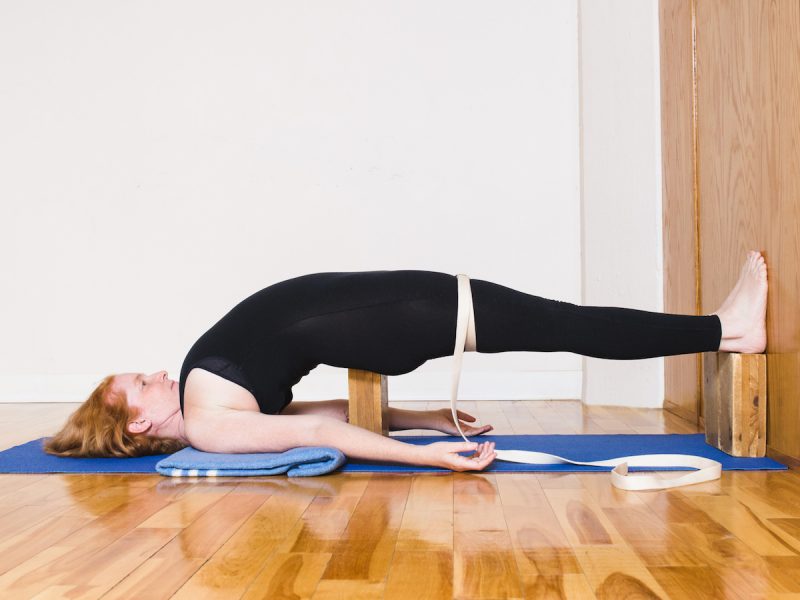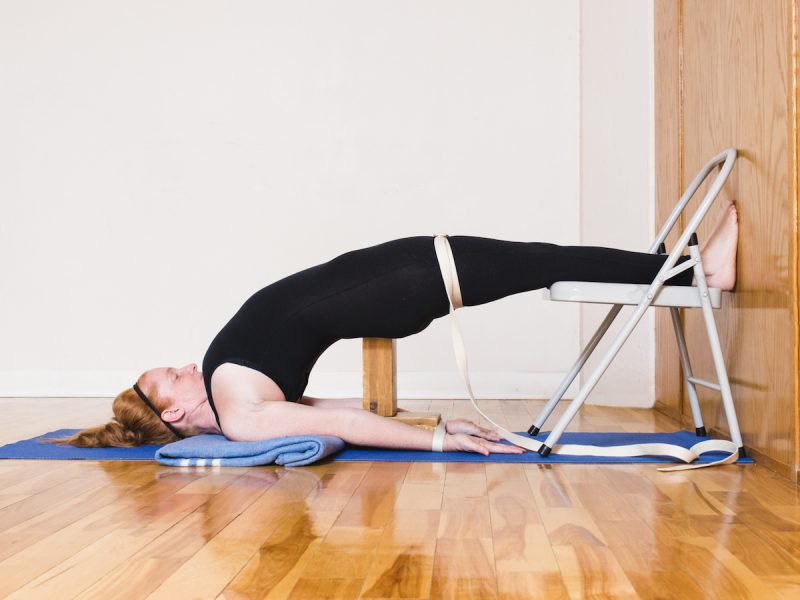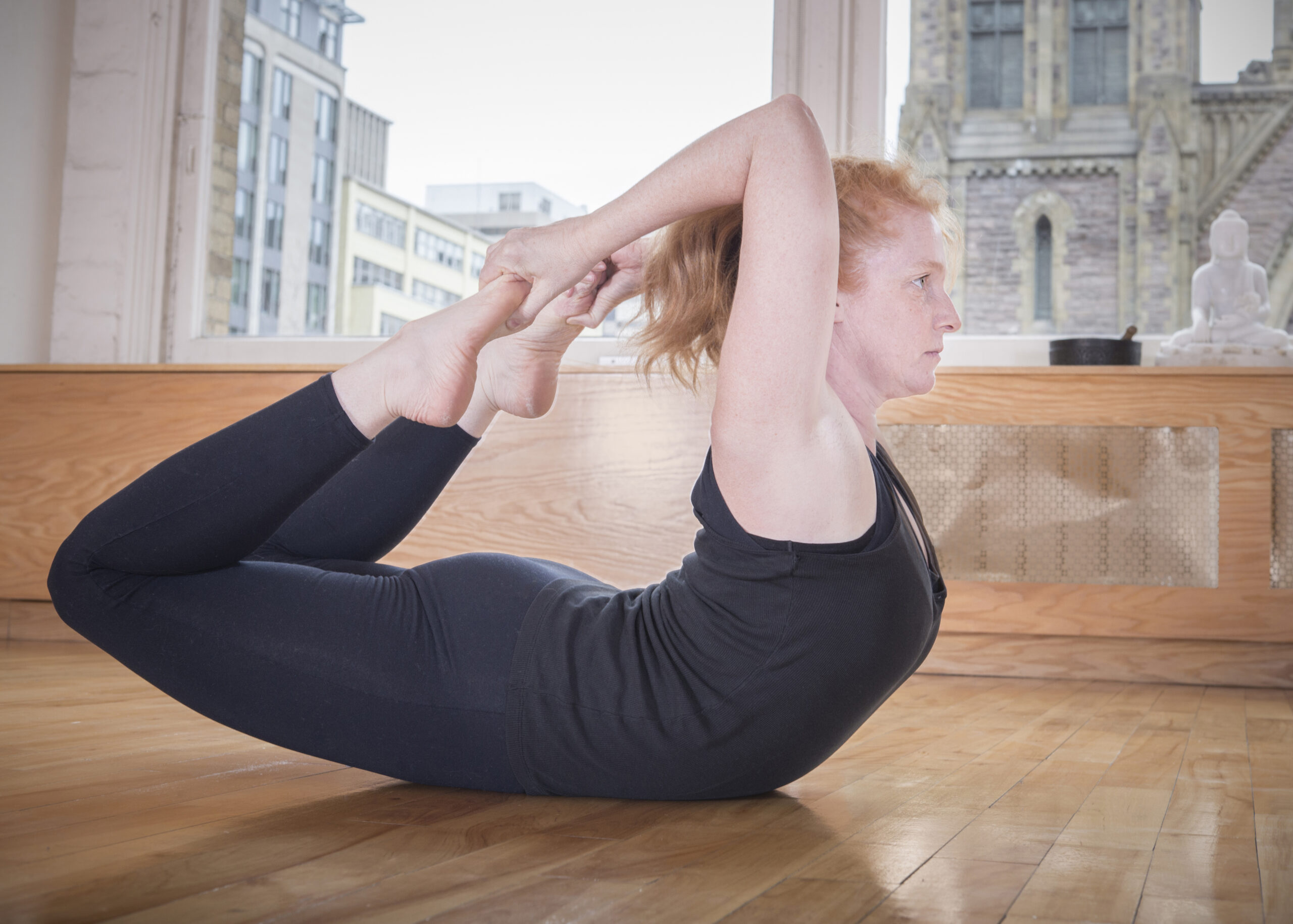One of the things that yoga practitioners dealing with stress and anxiety can do during their personal practice, whether they are just starting out or have years of experience, is to be kind to themselves.
“That is the biggest one,” said yoga instructor Donna Read during an interview with Subtle. “Be kind to yourself.”
Read is the co-owner of United Yoga Montreal in Québec, but often travels to teach workshops and train practitioners within and beyond the provincial borders. She could be in Rimouski, Québec, one weekend, and in Winnipeg, Manitoba, the next — or in Taiwan.
She was trained by Iyengar and Ashtanga yoga teachers, and is specialized in teaching a mixture of poses that can act as a nice support for our physical and mental well-being. But the yoga mat, she said, is not a place to bring pressure, anxiety and stress.
“It’s where you have to be kind to yourself,” said Read. “So if you’re coming to the yoga mat and you’re not being kind, then maybe the yoga mat is not the right place to be at that moment.”
I met Read in my early twenties, over a decade before the COVID-19 pandemic began. She had long, ginger hair that she would tie up in a bun or a ponytail, and often dressed in black. She also had a quirky sense of humour and a laugh that added an element of fun to an otherwise calm and focused atmosphere.
At the time, Read was renting a small but cozy studio in the core of downtown Montréal, right next to St. James United Church — an old, 1889 Gothic Revival heritage church located on Sainte-Catherine Street (West). With each class, she brought a wealth of yogic knowledge and a deep understanding of the physical body that proved useful when trying to understand the poses and the “mind-body” connection. The “be kind to yourself” motto was at the base of it all.
“If you think that you have to practice for an hour and a half, four times a week, then maybe you need to give yourself that break and say, ‘Well, I’ll get on the mat and if I only do 10 minutes, I do 10 minutes. If I end up doing 30 minutes, then I do 30 minutes,” said Read. “Don’t put that pressure of having to do an hour and a half, three times a week, or whatever [amount] that is for you.”
Instead, she advises getting on the mat and doing what you can, in that moment, before moving on to something else. “We have to remember that the yoga practice is non-violence, which also means non-violence towards yourself.”
According to Yogapedia, it is widely believed within the yoga community that the Indian sage Patanjali authored or compiled the Yoga Sutras, which contain information on the eight limbs of Ashtanga yoga. One of those “limbs” are the yamas, which include “ahimsa” — a word that embraces the concept of non-injury and non-violence.
Restorative versus recuperative practice

Asked what type of practice a person might consider when struggling with stress or anxiety, Read said it depends on how the person is feeling. If they are extremely (physically) tired, they can do a restorative practice — “which for me does not mean lying down on a bolster and doing nothing.”
“A restorative practice would [include slightly] longer holds. And then maybe working a bit with props so that you’re feeling a little bit more stable and supported,” she said, adding that a restorative practice is meant to provide some stability without working yourself to a place of physical depletion.
If you are mentally fatigued, she advises focusing more on a movement-type of practice — “some sort of vinyāsa practice where you’re moving.”
In contrast, a recuperative practice would be more low-key. “For me, it is more [of something that you would do] when you’re ill — when you’re sick.”
For example, if you are recuperating from a COVID-19 variant, Read said you would do a recuperative practice that involves no effort whatsoever. This means the practitioner is supported with props that allows them to enter a state of deep relaxation.
The Big Six
As for which poses are best to implement in a daily practice, Read said it again depends on the situation, but pointed to the “Big Six.”
“The Big Six are the most important to stabilize,” said Read.
The “Big Six” consists of inverted (and some non-inverted) asanas known as Sirsasana (headstand), Sarvangasana (shoulderstand), Halasana (plow), Setu Bandha Sarvangasana (supported bridge pose), Viparita Karani (inverted lake posture), and Savasana (also known as Corpse pose).
“If you don’t know what to do in a practice — if somebody says to me, ‘I’m not sure how I’m feeling, my back is hurting a little [or] I’m a bit tired, I’m a little anxious … if I don’t know what to give somebody, I would say to them: ‘stabilize with standing poses. So all standing poses basically, and some of the inversions of the Big Six.”
Read is aware that not everyone can do a head stand or shoulder stand, and so recommends choosing a couple of the poses to work on. For people that want to have more energy, she advises focusing more on downward dogs, hand stands and head stands.
“But then, if you need to calm down a bit, you would [focus] more on the shoulder stands, Viparita Karani, and Halasana — if we’re talking more in the inversion game,” said Read. “But standing poses for stability, number one. You can’t really go wrong with standing poses and some of the Big Six.”


Getting your practice started
On how to implement a regular daily or weekly practice, Read advises making a schedule that includes your “busy time” and the time you take to do the things that make you happy.
“I know it sounds crazy that you have to schedule it in, but unfortunately that’s where we’re at. It’s almost too easy to work from like 6:00 a.m. until 9:00 p.m. now that we’re on computers and stuff. So if that’s happening, schedule a walk or whatever it is that you want to do at [a specific time].”
The important point, she noted, is to find the space to schedule that “something” in and to make sure you do it. And at the end of the day, if you cannot make it or if you are half an hour late — “be kind to yourself.”

